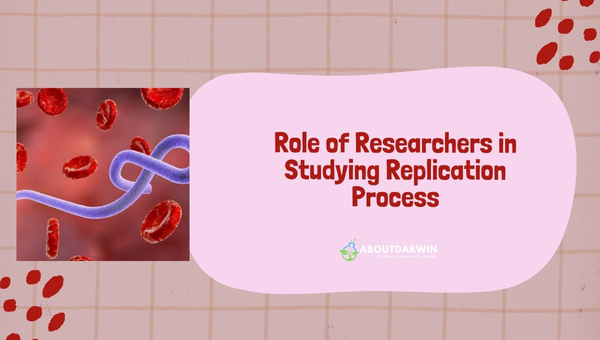Physical Address
304 North Cardinal St.
Dorchester Center, MA 02124
Are you curious about how a single, tiny virus like Ebola can multiply and wreak havoc on human bodies? If yes, then this article is perfect for you. We will dive deep into the fascinating world of virology, specifically exploring the replication process of the deadly Ebola virus.
By understanding how this virus replicates within the host cells, we unveil its hidden mechanisms—knowledge that can be pivotal in designing effective treatments and preventive measures.
Ebola virus infiltration into host cells marks the initiation of replication. It uses a unique method called macropinocytosis to gain entry inside these cells; once inside, it releases its genetic material (RNA) into the cytoplasm.
This RNA is transcribed and translated using host cell machinery to produce new viral proteins that assemble to form fresh virions within the cell’s cytoplasm—the new virions are then expelled through budding—a process where they acquire their envelope from parts of the host cell’s membrane.
Contents [hide]
The Ebola virus, notoriously known for its deadly outbreaks, remains one of the most virulent diseases in recent history.

This section aims to shed light on its origins and characteristics.
The Ebola virus was first discovered in 1976 near the Ebola River in what is now the modern-day Democratic Republic of Congo. Since then, multiple outbreaks have occurred across Africa with devastating effects. Here are some key historical points:
These historical instances have led to significant advancements within epidemiology due to an urgent need to control and prevent further spread.
The Ebola virus is a member of the Filoviridae family, which also includes another deadly virus – the Marburg virus. It causes a severe hemorrhagic fever known as “Ebola Virus Disease” (EVD) or simply “Ebola”. This disease brings about severe systemic symptoms, ultimately leading often to fatal outcomes unless managed aggressively at early stages. Here are some essential characteristics:
This information is crucial to understanding the nature of the Ebola virus and its impact on public health worldwide.
Also Read: GenomicsEducation Merger: Now Part of GenealogyExplained
The replication cycle of the Ebola virus consists of a complex series of events resulting in the production of more viral particles in host cells. Understanding this process can help scientists develop effective treatments and preventive measures.
The initial phase involves the Ebola virus gaining entry into host cells. Here’s a detailed breakdown:
For entry, the viral particle first attaches itself to host cell receptors using its surface glycoproteins.
Once attached, it is then taken up inside the host cell by a process called endocytosis – kind of like being swallowed up.
An acid environment within the endosome (an enveloping vessel created by the host cell) triggers changes that lead to fusion between viral and vesicular membranes. This causes an opening that allows the viral core to enter the cytoplasm.
Once inside, Ebola employs its unique biochemical machinery to start making copies of itself:
This two-step approach followed by viruses like Ebola contrasts with our body’s general one-step mechanism, where DNA directly serves as a template for mRNA synthesis followed by protein production.
After transcription and translation take place effectively:
Overall, the replication process of Ebola illustrates the potency and persistence of this deadly virus. However, understanding these steps provides clear targets for pharmaceutical intervention.
Also Read: Understanding Your Brother’s Wife Role: A Comprehensive Guide
Several factors influence the replication rate of the Ebola virus. These include atmospheric conditions and host immune responses, which both play crucial roles in how quickly and efficiently the virus can reproduce within a host organism.
Atmospheric conditions such as temperature and humidity may have a substantial effect on viral replication rates. It’s important to consider:
However, once inside a host organism, many of these external factors have less impact due to the controlled internal environment that is maintained relatively constant by homeostasis.
The immune response of the host organism plays an equally important role in influencing Ebola’s ability to replicate successfully:
The natural immune response activates immediately after exposure to pathogens, including viruses like Ebola. This includes physical barriers such as skin and mucosal surfaces along with cellular defenses involving white blood cells and inflammatory responses.
This involves specific reactions targeting primarily foreign molecules or antigens presented by pathogens entering our bodies; two main actors here are B-cells, responsible for antibody production against antigens, and T-cells, which facilitate killing off infected cells directly or through signaling other immune cells.
A strong, responsive immune system can rapidly recognize and eliminate invading viruses before they get a chance to replicate, thus limiting disease development significantly. Conversely, a weak or compromised immune system can provide a fertile ground for viral replication.
Understanding these influencing factors may help researchers gain strategic insights to fight against the Ebola virus more effectively. By creating unfavorable conditions for replication or boosting one’s immune response, we may start to tip the balance in the host’s favor.
Also Read: How Do Family Trees Work? Unraveling The Intricacies
Studying the replication process of the Ebola virus is a task approached by many scientific researchers globally.

Their critical work not only helps us understand how this deadly virus spreads and affects its host but also enables scientists to devise effective cures and vaccines against it.
The field of virology has been fascinated by the Ebola virus, leading to numerous studies focused on unraveling its replication process. Some key findings from recent research include:
Interestingly, these insights are gathered using sophisticated bioinformatics tools, next-generation sequencing techniques, and live imaging systems within biocontainment facilities.
Understanding the minutiae behind the replication process holds massive implications for vaccine creation. Below are ways in which this intricate knowledge can contribute:
Thus, constant study into Ebola’s intricacies supports advancements toward efficacious treatments combatting not just current strain variations but also potential future mutations.
Also Read: Sabouraud Dextrose Agar (SDA): Composition, Uses, and More
An infected person can spread the Ebola virus through direct contact with their bodily fluids like blood, saliva, sweat, or other secretions. It can also be transmitted by contact with surfaces and materials contaminated with these fluids.
The replication cycle of the Ebola virus typically varies between 8 to 12 days. However, it largely depends on the host body and other environmental factors.
Preventing replication primarily involves strengthening one’s immune system and reducing exposure risk. Medical treatments that interfere with various steps in the virus’s replication process are also being developed.
Despite this, there are generally six broad steps required for viral replication to occur successfully. These include attachment, penetration, uncoating, replication, assembly, and virion release.
Also Read: Uncovering the Mystery: Who Really Owns Ancestry.com?
Understanding the Ebola virus and its replication process is a complex topic but vital for our ongoing fight against this deadly disease.
The virus follows a cycle of entry into host cells, transcription and translation, and assembly and budding to produce new virions that continue the spread of infection.
Factors such as atmospheric conditions and the host’s immune response can impact this replication process.
By studying these mechanisms in detail, researchers can better formulate potential treatments or vaccines. It is through collaborations within the scientific community that we can hope to contain outbreaks effectively and remain prepared for future instances.